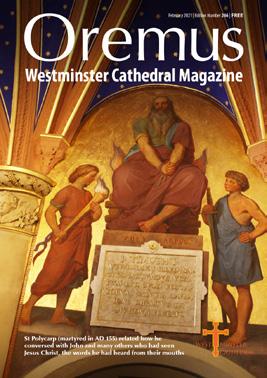
3 minute read
Statues Disrespected - King George I
from Oremus March 2021
Poor Old George I
Londoners, it seems, have not always respected their statues …
A plan to commemorate King George I with a statue in St James’ Square came to nothing when the Chevalier de David (a pupil of Bernini whom King William III had brought over to England) failed to raise subscriptions. In 1726, however, Sir Richard Grosvenor erected a gilded lead, equestrian statue of the king in Grosvenor Square; it came from the Van Nost family’s sculpture yard and cost 250 guineas.
The following year the horse’s leg was torn off by a Jacobite mob and an obscene verse was tied around its neck. It also became the subject of a Jacobite song in which King Charles’ horse trots over from Whitehall and both animals join in roundly condemning the Hanoverian rider. The statue was till in place in 1838 but subsequently disappeared.
A similar statue appeared in Leicester Square in 1748. It was brought from Canons, the magnificent Palladian mansion built near Edgware by that amiable tycoon, James Brydges, First Duke of Chandos. Alexander Pope may have been referring to Canons when he wrote of ‘trees like statues, statues thick as trees’ and the gilded equestrian figure of George I was a noted feature of the place. However, the Second Duke, deep in debt and uninterested in art, sold off the estate and its contents for a song.
The statue was given as a birthday present by his friends to Frederick, Prince of Wales, who had been living at Leicester House since his break with his father, King George II. According to Horace Walpole, its erection was specially calculated to annoy George II, who in turn had had difficult relations with his father, George I. The dramatically glowing form soon became famous - it proved that, if not the streets, then at least something in the capital was made of gold. However, during the 19th century the Square’s condition deteriorated under a succession of owners.
In 1851 James Wyld’s Great Globe, a huge inverted representation of the Earth’s surface, was set up there and the statue was buried in a pit 12 feet below ground. By 1861 a builder had cut down all the trees, the Square was filled with rubbish and when the statue emerged that year it was much damaged, lacking arms and legs, whilst the horse, similarly lacking a leg, was propped up on two sticks.
In September 1866 the statue was given a shining coat of whitewash. A letter then appeared in The Times, signed by the statue itself, complaining that one coat would hardly be warm enough for the coming winter. The response came shortly afterwards, to the delight of the crowds who thronged to see the spectacle. Overnight someone had added black spots to the white, tied donkey’s ears to the horse and given the king a dunce’s cap and broomstick lance. Having suffered these indignities, shortly afterwards the rider disappeared and the horse was sold off as scrap. from John Blackwood’s London’s Immortals: The Complete Outdoor Commemorative Statues
I wish to receive Oremus by post
PLEASE COMPLETE IN BLOCK CAPITALS I wish to receive Oremus by post I enclose a cheque for £ payable to Westminster Cathedral Administration I enclose a donation of £
Name:
Address:
Postcode:
For further information please call 020 7798 9052 or email oremus@westminstercathedral.org.uk . We would like to thank our readers for their continued support and all those who send donations. Annual postal rates: UK £25; Europe £50; Rest of the world £60. Send to: Oremus, 42 Francis Street, London SW1P 1QW United Kingdom











